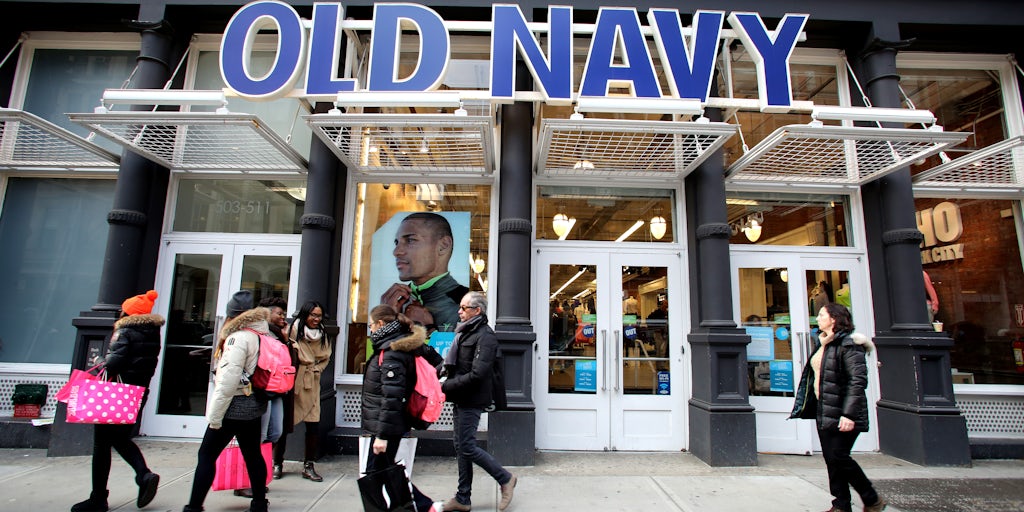Can Retailers Get Ahead of the Holiday Rush? – WWD
With Amazon Prime Days behind us and the holiday shopping season well on its way, fast and free delivery options are proving to be the must-have offering of the season for consumers who are expected to shop online more than ever.
As consumers continue to gravitate online, experts from EY predict that the supply chain will feel increased pressure, advising the time for retailers to get ahead of the anticipated spike in supply chain demand is now.
Here, Jeff Orschell, Americas retail leader at EY, discusses shifts in consumer behavior, the strain on the supply chain, investing in technology, and what retailers need to consider now.
WWD: How can retailers meet consumer demands for a winning holiday season?
Jeff Orschell: Over the past seven months, EY’s Future Consumer Index has shown that trust and transparency are paramount. When asked about the most important factors when making a buying decision, authenticity and honesty (44 percent), clear labeling (44 percent), transparent source or product origin (32 percent) and a guarantee of origin (32 percent) have been the top responses for four months running.
With 59 percent of consumers planning to shift more of their shopping online, digital-first personalization is going to play a huge role this holiday season. Retailers must navigate how to give consumers the personalization they crave, while still meeting their socially distant, digital-first demands.
This is where a multichannel approach can be extremely beneficial for both consumers and retailers, driving personalization throughout the entire consumer journey. But, curating personalized experiences in today’s environment brings a whole new challenge: How can retailers meet consumers where they are (online), while still providing the same hyper-personalized experience they have come to expect in-store? Those that can find the perfect formula are poised to come out ahead.
WWD: With so many customers continuing to prefer home delivery to other shopping methods, what will the impact be on shipping?
J.O.: Everyone in the retail supply chain ecosystem is feeling the pressure to fulfill online consumer demand during the holiday season, from now until the end of the year. According to EY’s latest Future Consumer Index, from mid-July, consumers are still hesitant to re-engage in normal pre-pandemic activities. More than half of consumers are still uncomfortable going to a mall or trying on clothes in-store. This shift in consumer behavior will drive an expected surge in e-commerce and a rise in new purchasing methods, such as curbside pickup.
Big-box retailers and e-commerce companies have pushed up Black Friday deals from November to October this year, and we expect to see an increase in supply chain demand as early as the first of November.
WWD: How important is it to consumers to receive fast, free shipping options when making an online purchase?
J.O.: Consumers are no longer accepting of the pandemic as an excuse for delayed deliveries or unsatisfactory customer service — their patience is reaching a breaking point. If retailers want to maintain shoppers’ trust and business in this new COVID-19 reality, they need to meet consumers’ evolving needs and less-than-forgiving expectations.
According to EY’s Fourth Consumer Index, only 21 percent of consumers are currently forgiving brands and stores whose service has been disrupted by COVID-19. Another 43 percent say the quality of service has become a bigger priority for them compared to the month prior. Further, 50 percent of consumers note that they’d switch brands and stores if the service they deliver falls below their promise in the next one to two years.
Consumer behavioral shifts are here to stay long beyond the pandemic, and those companies that will come out ahead are those that can rethink the consumer end-to-end experience for the long term.
WWD: How can retailers get ahead of an anticipated spike in supply chain demand?
J.O.: Recent hiring pledges made from logistics providers and big-box retailers demonstrate the pressure that e-commerce is putting on fulfillment centers across the country. Retailers are responding by encouraging consumers to diversify their shopping habits, including curbside pickup. However, if curbside pickup is a core part of a retailer’s digital channel, they need to accurately staff employees in the stores to fulfill those orders. In contrast, if retailers plan to ship to home, they need to work with shippers as soon as possible so that they can be prepared for the volumes that you are forecasting.
WWD: What can retailers do to prepare for more shipments this holiday season?
J.O.: To get ahead of this spike, retailers must work in tandem with shippers in real-time. This includes anticipating ebbs and flows in the supply chain, both for products and different geographical regions, being agile to respond to issues in real-time and pivot strategies as needed to meet evolving consumer demands and mitigate the risk of a larger issue, and if a larger issue does occur, retailers need to have solutions in place. This includes working with key partners to solve the problem as quickly as possible, while simultaneously ensuring that consumer brand loyalty isn’t at risk, for example, offering coupons or rewards, as well as communicating delays or changes in real-time.
It’s been a tough year for retailers — nearly 7,500 stores are expected to close this year, following record-high close dates in 2019. For the businesses that have been able to survive, this upcoming holiday season will be yet another test of efficiency and productivity. To guarantee a successful holiday season, retailers must pivot to a collaborative approach with shippers — from consolidating shipping points to sharing forecasts and promotion plans.
To prepare for increased demand and remain competitive during the busiest shopping season, technology is key to retailers’ success. This includes using sensors to capture data and track inventory, implementing AI and machine learning to improve delivery times, and augmenting customer service with digital assistants to field consumer questions and optimize employee performance.
WWD: With more consumers wanting to socially distance, is shipping from a store a viable option?
J.O.: We are starting to see major retailers pivot their shipping strategies to meet high demand, including shipping directly from local stores instead of global warehouses. But, even with creative shopping strategies, consumers can still expect longer-than-normal delivery times — and retailers must prepare for that.
Shipping directly from the store is a viable option and is just beginning to pick up steam. In the next few weeks, expect to see many other retailers look to this method to get ahead of the holiday rush — and avoid crowded curbside pickup situations. However, this model will highlight the need for brick-and-mortar retailers to better manage their in-store inventory to guarantee they have top items in stock throughout the season.
For More WWD Business News:
Brex Introduces Instant Payouts and Tailored Rewards
Pier 1 Imports Finds New Life as E-commerce Only Site
Online Shoppers Seek Convenient, Transparent Experience — With Returns, Too





